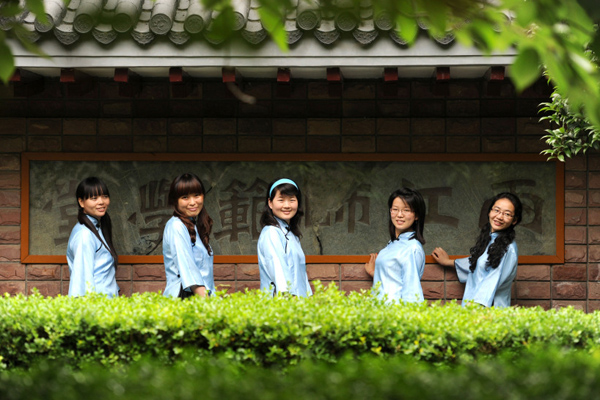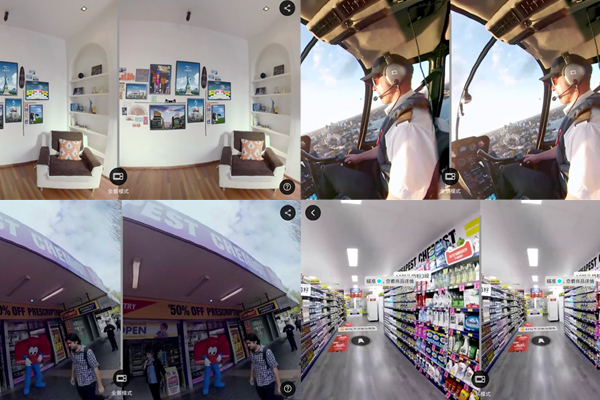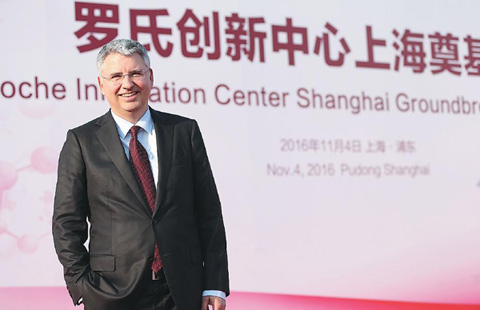Prosperity on the plateau
Despite challenges, with the support of the central authorities and other regions, Tibetans share fruits of progress
After its peaceful liberation from millennia-long feudal serfdom, huge vitality has been released in the Tibet autonomous region since democratic reforms were launched in 1959. "Leap-forward" progress has been made, especially over the last three decades.
Under the Settlement Project implemented by the central government and the autonomous region's local government, many herding households in Baqen, in northern Tibet's Nagqu prefecture, now own a spacious furnished cottage equipped with a telephone, television and modern home appliances. The construction of barns, storage sheds and solar-powered wells for drinking water have also better preserved the region's grassland ecosystem, lowered the livestock mortality rate and increased the survival rate of infant livestock.
Good conditions have been created to offer Tibetan herdsmen medical care and to make education accessible to their children. Under the Comfortable Housing Project sponsored by the central and local governments, many Tibetan households have moved to government-funded houses and now live a more comfortable life. For centuries before the region's democratic reform in 1959, many Tibetans had to endure the pain of kashin-bek, a chronic endemic bone disease. However, under the Comfortable Housing Project, Tibetan households can get a housing subsidy of up to 25,000 yuan ($4,010) if a member of the household suffers from the disease.
To improve the education of various ethnic groups in the region, the central government has adopted a sanbao policy (subsidising children's school meals, lodging and tuition), and continuously raised the level of the subsidies. The sanbao policy has been extended to 15-year compulsory education for ethnic children in the region. To narrow the region's information gap, the central government has also promoted radio and television for every village. This, together with the "village library" project and the provision of Internet services, has offered Tibetan herdsmen, monks and nuns access to the fruits of China's modern civilization.
The central government's efforts to include all Tibetan residents in the pension, healthcare, and minimum subsistence allowance systems are also a practical step toward "prioritizing people's livelihoods" and "putting people first".
To preserve Tibet's natural environment, the central government has launched a campaign to return some of its farm areas to grassland, and expanded grass planting, effectively curbing the degradation of its grasslands and their desertification. So far, 47 nature reserves have been set up in the autonomous region, with a total area of 413,700 square kilometers, almost 35 percent of the region's entire area. At the Fifth National Conference on Work in Tibet in January 2010, the central government urged the establishment of an ecological compensation mechanism, which will help the region improve and preserve local ecosystems.
The central government has also extended enormous support for the development of the traditional culture of various ethnic groups. For example, 380 million yuan has been spent on the Potala Palace, Norbulingka and Sakya Monastery, the region's three major cultural heritage sites, within seven years. The establishment of the Intangible Cultural Heritage Protection Center of Tibet in 2011 marked a new stage in the protection of the region's intangible cultural heritage. So far, there are about 800 projects aimed at promoting the protection of the region's intangible cultural heritage.
Despite the endless attempts made by various internal and external forces to sabotage its development, the Tibet autonomous region has achieved remarkable economic, cultural and social progress with the support of the central government, which is sparing no efforts to promote the region's development.
The development strategy for China's western areas, aimed at addressing the development imbalances among different regions, has brought huge benefits to the autonomous region. To push forward the region's development, the central government has implemented an aiding-Tibet policy among other provinces, municipalities and autonomous regions and taken measures to ensure it is implemented so that Tibet can draw resources from across the mainland in its development.
Some defects may exist in the central government's work in the region, but these cannot justify the groundless and distorted denunciation of China in the report released by the New York-based Human Rights Watch on Friday.
With the region's society and economy undergoing sea changes, Tibetans themselves should be the judges of the policies and measures adopted by the Chinese central government in the region over the past decades.
The author is a researcher with the China Tibetology Research Center.























